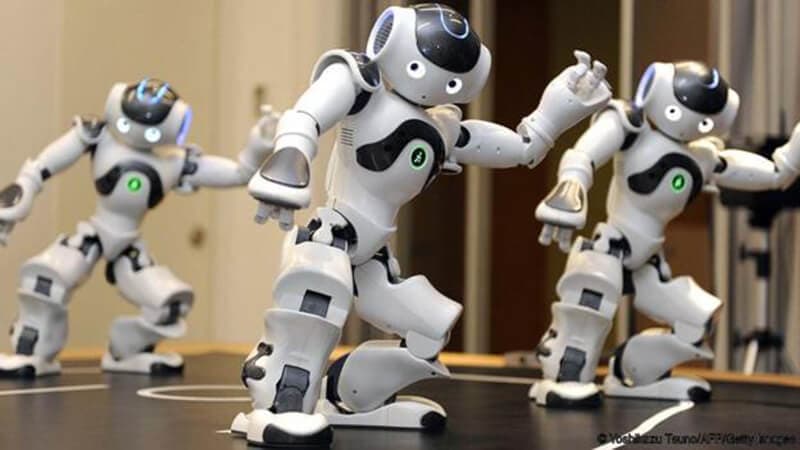- Meet Nao, a talkative robot that captures children’s attention
- Building communication- and social skills made easy with Milo
- Schools should welcome intelligent robotic teachers
When someone mentions autism, Hollywood movies like Mozart and the Whale or Rain Man, may come to mind. The actors in these movies do depict autistic characteristics but they are often dramatised. For instance, they are portrayed as high-functioning, possessing advanced math skills and having photographic memory – while completely lacking any social skills. While some people suffering from autism do have extraordinary skills, many are of just above average or even average intelligence. What is true for most people with autism spectrum disorders (ASD), however, is their struggle with social interaction. They deal with many challenges, from communication and learning to expressing their emotions. And helping them overcome these challenges is not easy. But thanks to advances in robotics and artificial intelligence (AI), it’s now possible to help them learn to interact with others and reach their full potential. Studies show that some children with ASD can improve their communication and social skills by up to 30 per cent with the help of robots. This has encouraged many companies to develop mechanical companions to help these children. In fact, robot-assisted therapy might be a real breakthrough to improve the overall quality of life for those with ASD.
Free trendservice
Meet Nao, a talkative robot that captures children’s attention
If you wonder why children prefer interacting with robots, you’re not alone. Researchers have dedicated a lot of time to finding out why children with autism are more open with robots than they are with humans. They think it’s because robots are not as complex as people, especially when it comes to emotional communication. Plus, they’re like toys – only smarter.
Take Nao, for example. It’s not an ordinary robotic toy that children play with, but rather a smart one that helps children with autism develop their communication skills. “Our robot looks a lot like a human but doesn’t have all the (facial) features that a person does. That can help people with autism because the robot is simpler. They can focus on one social aspect of communication at a time,” shared Mohammad Mahoor, an associate professor in the D.F. Ritchie School of Engineering and Computer Science at the University of Denver. Developed by a French company, SoftBank Robotics, this humanoid robot is able to learn about a child’s behaviour. Nao uses its two cameras and four microphones to record a child’s facial expressions and body language as they interact. Then, it carefully assesses this data to figure out the most effective way to gain (and keep) the child’s attention. This allows therapists to design personalised therapy plans for each child. Nao is still in its testing stage, and scientists from several universities are working on refining it. Nao is expected to become available in 2019, the MailOnline reports.

Building communication- and social skills made easy with Milo
A Danish school, Skolen ved Nordens Plads, hosts a smart robot designed by Robokind. It’s called Milo, and it helps students with autism learn to express themselves more easily. For them, interacting with others can be a real struggle. But that’s not a problem for Milo. In fact, that’s where this new robot really shines! What’s so unique and special about it is that it’s capable of complete social interaction. Armed with the ability to show emotions through facial expressions, it can communicate with its own voice, further strengthening its ability to connect with children. Richard Margolin, the founder and director of engineering at Robokind, says that Milo’s essential feature is its ability to produce a range of voices – a ‘skill’ developed by the Acapela Group using the voices of real children. This proves to have a huge impact on developing social and communication skills in children with autism. Welcomed at a couple of schools in southwest Iowa, and working ‘part-time’ in the Wilson Middle and Roosevelt Elementary Schools, Milo is more than a robot – it’s a real teacher. Lori Durand, the school psychologist and autism facilitator for the district, explained that Milo is teaching students about social norms, something that most of them struggle with. Through applied behaviour, Milo provides immediate feedback, so that the students know whether their responses are right or wrong.
Many children diagnosed with autism have difficulty maintaining eye contact, and everyday social interaction is not something they find comfortable or easy. It’s a burden that affects not only their social life, but also their overall wellbeing. Thanks to Milo, they can learn how to overcome such issues. For instance, Milo teaches them what ‘sad’ or ‘happy’ is, engaging them in activities that explain emotions through videos or photos. Then, it demonstrates those emotions. Matt Twit, a teacher, notices the children’s improvement as the students who first work with Milo, and then with instructors, complete tasks more easily. Also, their engagement in conversation with their teachers and peers has increased, which is an immense success. With Milo, autistic children can learn with more ease and less effort, and social interaction will no longer be as challenging.
Schools should welcome intelligent robotic teachers
There’s no greater success for any teacher than helping students achieve their best. But to help autistic children develop their social skills and improve their quality of life is indescribable! “Personal experience and research shows that what holds students back is those social skills. It doesn’t matter what academic level they’re on if they cant [sic] interact with others they’re going to struggle with any job, and autism is the hallmark [of] struggling with social skills and interaction, and Milo is working on both,” Durand said. And we couldn’t agree more!
Share via:


